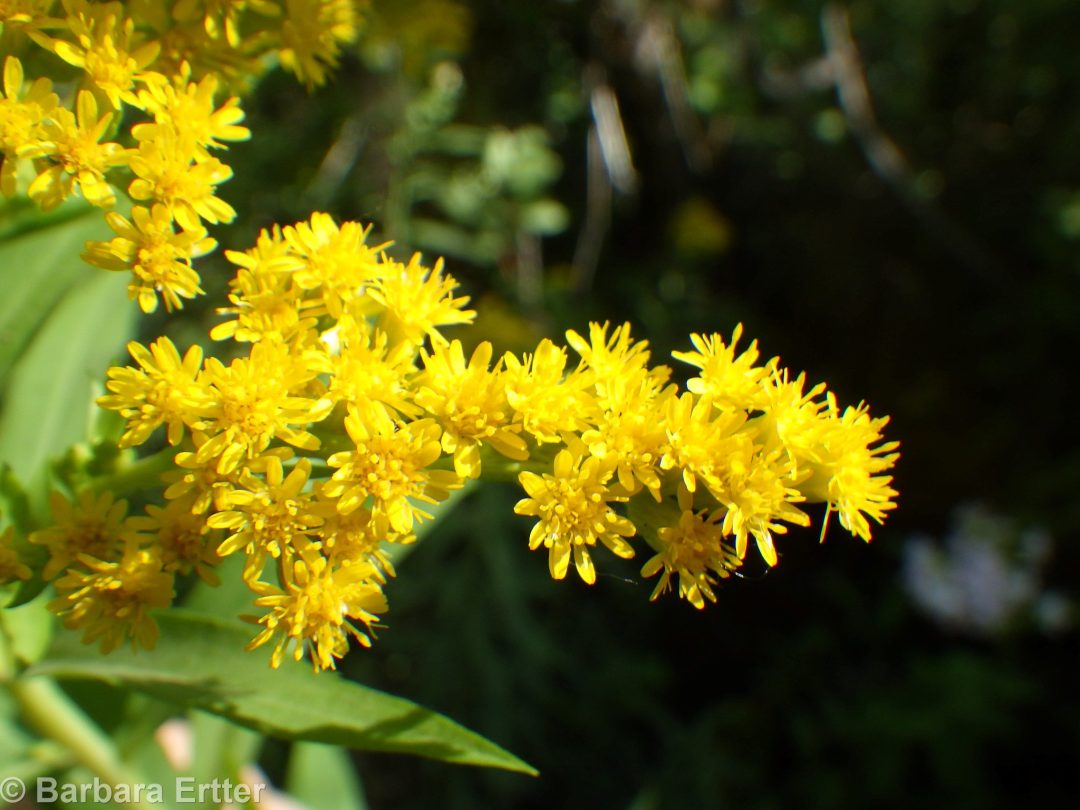Our common tall, wetland goldenrod has a complicated nomenclatural history, and until recently was generally included in a broadly circumscribed Solidago canadensis, with the common name of Canada goldenrod. Current treatments, however (e.g., Flora of North America, Flora of the Pacific Northwest) have divided Canada goldenrod into several species, with our local populations now mostly falling into Solidago lepida var. salebrosa, for which rough goldenrod can be used as a common name. That being said, Solidago canadensis in the narrow sense is in cultivation, and at least one collection of wild-growing plants near the lagoon in Julia Davis Park evidently represents this species; it differs from its native relative in it lack of glandular hairs in the inflorescence and relatively smaller flower heads.
By whatever name, our native member of the complex is the relatively tall (usually at least 1 m tall) goldenrod that is common along rivers, around ponds, and other wetland habitats. Leaves are exclusively cauline, evenly distributed on the stem, and are more likely to be obviously toothed than those of Missouri goldenrod (Solidago missouriensis). Stems are most often whitish and finely hairy above the middle and in the inflorescence. Phyllaries are linear with a narrow central herbaceous portion, and ray flowers are more numerous and more narrow than those of Missouri goldenrod.
As a further complication, a few populations ignore these distinctions and combine the habit, leaves, and ray flowers of Solidago lepida with the subglabrous stems (but not inflorescence) of S. missouriensis, with phyllaries also closer to S. missouriensis and stems often reddish. These plants are the common form in the hot spring overflow area at Chief Eagle Eye Reserve and lower Cottonwood Creek, occurring sporadically elsewhere. In previous regional treatments, these plants were treated as Solidago gigantea, but that species has now been circumscribed in such a way that these populations no longer belong here. Although included here as an anomalous variant of S. lepida var. salebrosa, they appear sufficiently different (at least locally) to merit further study. One possibility is that they result from hybridization between S. missouriensis and S. lepida var. salebrosa; if so, then it is at least locally stabilized. Another possibility is that the plants are not native, but instead an eastern species introduced by early pioneers that has become established; if so, this would explain the concentration of populations near the earliest areas of settlement. As always, there are more questions than answers.
Stem galls can often be found on this and other species of goldenrods. Check out “What’s really going inside those galls??“, by Chris Helzer, to find out just how much entangled biological mayhem might be taking place inside these innocent-looking swellings.
Semple, J.C & R.E. Cook. 2006. Solidago. Flora of North America North of Mexico 20: 107–166.









